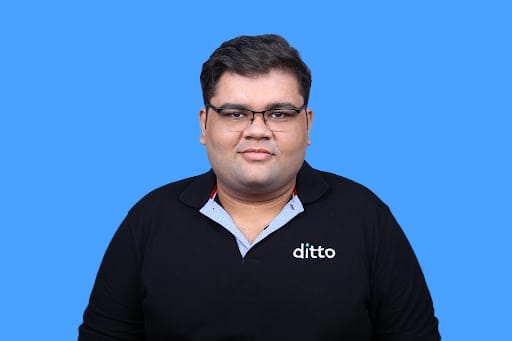India's largest public sector insurer (non-life), New India Assurance Co. Ltd., was founded in 1919. Due to its extensive insurance track record, the insurer offers a wide range of financial products. However, its policies are far from comprehensive in terms of health insurance. They might be affordable and have a few value-worthy features. Still, multiple restrictions, sub-limits, and clauses make these health insurance policies a less preferable option for policyholders.
Additionally, considering the increased demand and purchase of health insurance plans online and the share of policyholders in their 20s and 30s, digital presence is the need of the hour for any top-notch health insurance provider. However, New India Assurance Health Insurance is a traditional company without a significant online presence. This has added to the reasons why potential policyholders are seeking plans from other credible private health insurers.
Yet, New India Assurance Health Insurance still has a solid client base. If you are wondering why and if you should consider availing of a health insurance policy from this provider, here’s an in-depth overview of the insurer.
| Pros | Cons |
|---|---|
| Extensive track record | Poor network of partner hospitals |
| Low complaint volume | Lack of multiple comprehensive plans |
| Trust associated with a public insurance company |
Metrics of New India Assurance Health Insurance
With a network across 28 countries since 1919, the New India Assurance Health Insurance has one of India's most extensive insurance track records as a health insurance provider. While years of experience have still been factored in as a credibility metric for policyholders, the insurer is losing its foothold over its private competitors. The latter has been catering to the evolving trends in the health insurance sector - the digital product portfolio, customised plans via health insurance add-ons, ease of settling claims via online methods, and more.
On the other hand, New India Assurance Health Insurance remains true to its initial lineup of features and hierarchy of claim settlement and health insurance products. When it comes to credibility, an insurer’s market reputation is no longer adequate. The insurance-literate share of the population is now looking towards diverse metrics to help them arrive at a financially sound conclusion.
Here is a look at some of the metrics used to determine the credibility of a health insurance provider. (Please remember that we have picked up the data for the last 3 years, 2020 - 2023, for each parameter. We have also drawn an average of these 3 years and then compared them against the industry average. This is meant to offer you a more consistent insight into the insurer’s overall performance.)
Heads Up: It takes an average person up to 5 hours to read & analyze a policy, and 10 hours or more to compare different plans and make a decision.
This is why we propose a better alternative - taking a 30-minute FREE consultation with Ditto’s certified advisors. We have a spam-free guarantee, and we’ll never push you to buy a plan. Don’t delay this - we have limited slots every day, so book a quick call here before they run out.

Claim Settlement Ratio of New India Assurance Health Insurance
A key metric for assessing an insurer's credibility is its Claim Settlement Ratio (CSR). This ratio is calculated by dividing the total number of claims settled by the insurer throughout a year by the total number of claims received. The resulting figure is multiplied by 100 to obtain the insurer's CSR.
It's advisable to avoid insurers with a CSR below 80, as this suggests a deficiency in settling claims for policyholders. Similarly, if the CSR exceeds 100, it's prudent to steer clear of that provider. A CSR surpassing 100 indicates issues with timely claim settlements, which are reflected in the inflated ratio.
The ideal CSR falls within the range of 90 to 100. Insurers within this range are considered excellent choices.
(While CSR is a significant metric, it shouldn't be the sole factor when selecting a health insurance provider.)
| Years | CSR for New India Assurance Health Insurance | Industry Average |
|---|---|---|
| 2021 - 2022 | 99.75 | 89.967 |
| 2022 - 2023 | 99.9 | 91.460 |
| 2023 - 2024 | 98.0 | 92.0 |
| Average (2021 - 2024) | 99.0 | 90.0 |
Insight: Now, it’s true that, as per the statistics, New India Assurance Health Insurance has the best Claim Settlement Ratio data. However, this data from the IRDAI has certain inconsistencies, which makes CSR a problematic metric to consider for New India Assurance.
Incurred Claim Ratio of New India Assurance Health Insurance
If you only focus on a health insurer’s CSR when choosing a health insurance provider, you will face a significant hurdle—CSR doesn’t shed light on the time required to settle the claims, nor does it reveal if the claims have been settled partially or in full. Taking advantage of this loophole, an insurer may try to rig the CSR statistics by settling maximum claims of lesser numbers or partial settlement of high claims.
Subsequently, you might end up with an insurer that delays your claim settlement, leaving you to settle claims out of your pockets (either temporarily, in the case of reimbursement, or permanently, in case your claim is rejected). This defies the purpose of purchasing a health insurance plan. Additionally, timely claim settlement is extremely crucial when it comes to health insurance policies. This is why you should be looking at the Incurred Claim Ratio (ICR) of an insurer, which is given by -
(The amount of claim settled by an insurer across a year/ The total amount collected by this insurer via premiums for the year) * 100
- If you are looking for a top-notch health insurance provider, seek an insurer with an ICR between 50 and 70 (or in the 80s). This indicates that the insurer is balancing its focus on business profits and client requirements for claim settlement.
- On the other hand, if you come across a health insurance provider with an ICR of below 80 or above 100, it’s best to avoid these insurers since they are prioritising building profits or are making excessive payouts over claims, respectively. In both these cases, the insurer is looking at an issue with rejections of claim settlements and financial disruptions leading to problems with the brand's sustainability.
| Years | ICR for New India Assurance Health Insurance | Industry Average |
|---|---|---|
| 2020 - 2021 | 92.79 | 78.27 |
| 2021 - 2022 | 124.54 | 91.79 |
| 2022 - 2023 | 103.33 | 78.82 |
| Average (2020 - 2023) | 106.89 | 82.96 |
Insight: The ICR data of New India Assurance Health Insurance has remained alarming over the last 3 years. The numbers have surpassed 100, and the data inconsistencies aren’t encouraging either. As a potential policyholder, you cannot trust this insurance company despite its years of experience in the industry.
Complaint Volume of New India Assurance Health Insurance
When availing of a health insurance policy, you must first spot the ideal health insurance provider. While the insurer’s product portfolio is a crucial consideration, you must also prioritise its claim settlement track record - whether it’s a hassle-free process or you have a high chance of complaints about its overall performance. One sure-shot way to ensure this is to opt for a health insurer with a low complaint volume (number of complaints raised per 10,000 claims).
| Years | Complaint Volume of New India Assurance Health Insurance | Industry Average |
|---|---|---|
| 2021 - 2022 | 5.05 | 35.969 |
| 2022 - 2023 | 4.76 | 19.578 |
| 2023 - 2024 | 6.0 | 30.0 |
Insight: Unfortunately, we haven’t been able to collect any reliable data for New India Assurance Health Insurance’s complaint volume for the year 2020 - 2021. Hence, we have to base our insight on the data of the last 2 years. Considering these two years, the complaint volume comes to 4.9 complaints for every 10,000 claims registered. While these numbers are lower than the industry average, the absence of extensive data doesn’t lend you confidence about the insurer’s credibility over its overall operational proficiency.
Top Health Insurance Plans Offered by New India Assurance Health Insurance
This is one of the most basic health insurance plans from the New India Assurance Health Insurance stable. Unfortunately, the plan isn’t exactly comprehensive and comes with many caveats in the form of clauses, restrictions, and sub-limits.
Among the few positive points about the New India Assurance Mediclaim Policy is that it offers pre and post-hospitalisation expense coverage for 30 and 60 days, respectively.
Drawbacks: The policy has a long list of cons that include room rent restrictions, disease-wise sub-limits, a 4-year waiting period for pre-existing medical conditions, and no domiciliary coverage. Additionally, this policy is expensive compared to the other plans in its category from top-notch health insurance providers.
This is one of the most comprehensive policies offered by New India Assurance Health Insurance. It provides almost everything, including no room rent restrictions, no copayment, no disease-wise sub-limits *(there are some exceptions), coverage of pre- and post-hospitalisation expenses, coverage for daycare treatment, and more.
Staying true to its given policy name, the Premier Mediclaim Plan offers some of the industry’s most premium features: OPD coverage (up to ₹5,000 if you have made no claims for 2 consecutive years), maternity coverage (up to ₹50k), and a critical illness benefit (up to ₹2 lakhs).
Drawbacks: The plan doesn’t cover the expenses related to domiciliary treatments; there is a 3-year waiting period for pre-existing medical conditions, only 20% coverage in the case of AYUSH treatments, no restoration benefit, no No-Claim Bonus, and no free annual health check-ups. Such drawbacks are not welcome, considering the New India Assurance Premier Mediclaim Plan is pretty costly.
Like any of the industry's health insurance providers, New India Assurance Health Insurance also offers a niche product for policyholders over 60. Now, according to industry research, some hikes in premiums, restrictions across features, and a mandatory co-payment are somewhat expected in the case of health insurance plans for senior citizens.
However, the New India Assurance Senior Citizen Mediclaim Plan has a few more downsides, making it even less comprehensive than the other niche plans crafted for senior citizens. On the other hand, the plan also has a couple of exceptional features that are a rare find in such genres – no copayment and 1.5 year waiting period for pre-existing medical conditions,
Drawbacks: The policy offers coverage of only ₹1.5 lakhs. The plan has room rent restrictions, disease-wise sub-limits, only 10% coverage for daycare treatments, and no domiciliary treatment coverage. So, it lacks most of the priority features usually recommended for the best health insurance plans for senior citizens.
Why Talk to Ditto for Your Health Insurance?
At Ditto, we’ve assisted over 3,00,000 customers with choosing the right insurance policy. Why customers like Balaji below love us:
✅No-Spam & No Salesmen
✅Rated 4.9/5 on Google Reviews by 5,000+ happy customers
✅Backed by Zerodha
✅100% Free Consultation
You can book a FREE consultation. Slots are running out, so make sure you book a call now!
Conclusion
New India Assurance Health Insurance may have an extensive insurance track record, but it has failed to capture a place among India's best health insurance companies. From issues across its credibility metrics (CSR, ICR, and complaint volume) to non-comprehensive and expensive plans, the insurer has taken a back-foot in everything compared to its private insurer competitors. Hence, unless you are a brand loyalist, we recommend looking at other health insurance providers for a value-worthy health insurance plan with few to no restrictions catering to your financial bandwidth and medical requirements.
Last updated on:










